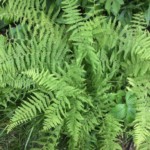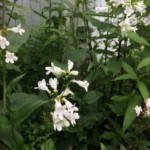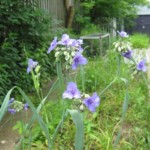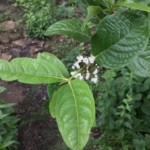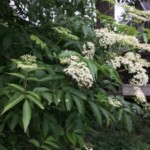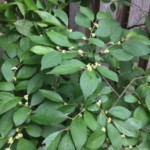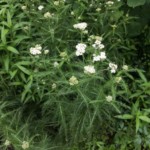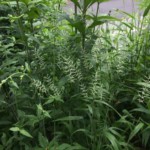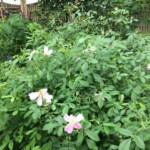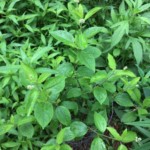Notes from the Understory
June 2018—Leaps and bounds
The next wave of flowers have bloomed, adding small dashes of yellow, white, pink, and purple to the vivid green of the leaves that dominate now. Each species seems to have its own personality. Some protect their flowers by closing up every evening: the Ohio spiderwort (Tradescantia ohiensis) balances its purple flowers on long legs for a few morning hours, yellow sundrops (Oenothera fruticose) stay open until late afternoon in large self-seeding clumps. The pasture rose (Rosa carolina) attracts its pollinators with floppy pink petals that always seem on the brink of falling off.
The understory is attracting the usual fauna: Carolina chickadees are finding protection deep in the branches of the American elderberry (Sambucus canadensis) shrubs, which are covered with white flower umbels; house finch couples are already nibbling at the green seed heads of the lyreleaf sage (Salvia lyrata); chipmunks and squirrels are unearthing white oak (Quercus alba) acorn caches; rabbits are stripping the bottom leaves off of small white American aster (Symphyotrichum racemosum).
Goodbye until next spring to the swaths of purple lent to us by the Virginia bluebells (Mertensia virginica), crested iris (Iris cristata), curleyheads (Clematis ochroleuca), violet woodsorrel (Oxalis violacea), common blue violet (Viola sororia), wild blue phlox (Phlox divaricata), lyreleaf sage (Salvia lyrata), Carolina geranium (Geranium carolinianum), and wild geranium (Geranium maculatum).
By Dean Arkema
Coming up: Identifying sedges and grasses that came from our seedbank.

